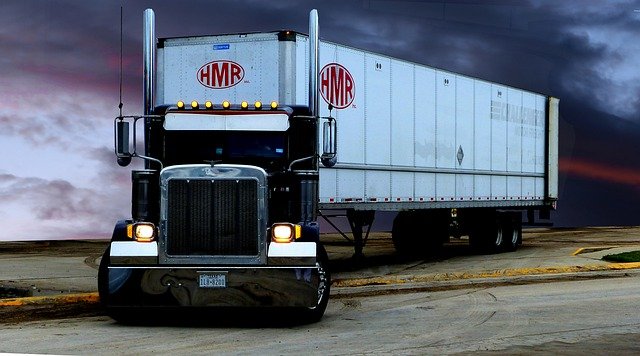Transportation plays an indispensable role in every economy. It can either be the transportation of people or goods. Heavy-duty vehicles primarily transport goods from one point to another. For the most part, we have figured out the transport of people and lightweight goods. But heavy equipment transport, including heavy-duty vehicles, is not as obvious.
In a nutshell, heavy-duty vehicles broadly refer to any vehicle that exceeds 26,001 pounds. These types of vehicles are best for long-haul transportation. Heavy-duty trucks are large and have the perfect capability of transporting heavyweights of cargo that no small vehicle can do on land. The heavy-duty vehicles are multi-purpose, including bulk load transportation, long-haul distribution, mining and construction tippers, closed containers, tractor-trailers, and flat-bed trailers.
But before you move your heavy-duty vehicle or contract one to move your cargo, you must understand how vehicles are classified so you can choose the best for your hauling needs.
Understanding Vehicle Classification
Vehicle classification is done according to their weight. They are segmented into light-duty, medium-duty, and heavy-duty categories.
They usually use the Gross Vehicle Weight Rating (GVWR). Classifying these vehicles is a safety parameter used to control overloading. It limits the maximum number of people, goods, and even fuel that a vehicle can accommodate.
The maximum acceptable weight of any vehicle depends on the axle strength, brake efficiency, tire capability, and also the vehicle’s frames.
What Vehicles Are Considered Heavy Duty?
Heavy duty vehicles are used to carry heavy loads. They include, but are not limited to, transit buses, mobile cranes, cement mixers, refuse trucks, tractors designated to pull refrigerated trailers or dry vans, or any other equipment. If you’re shipping freight, understanding your freight needs before contracting a reputable company with a proven track record will help you save on resources and time.
Heavy duty vehicles are classified into three:
- Class 7 – 26,001 to 33,000 pounds
- Class 8 – 33,000 and above
- Class 9- vehicles that exceed 60,000 pounds. This category is usually referred to as super heavy-duty vehicles.
Examples of the light-duty vehicles in each category
- Class 7 – Autocar ACMD, Freightliner Business Class M2 106, Ford F-750, Hino 338, International MV, Kenworth K370, Kenworth T370 and T440/470, Mack MD, Peterbilt 220 and 337/348
- Class 8 – Autocar ACX and DC; Volvo Truck VNL; Freightliner Cascadia, Business Class M2 112, 118SD, and EconicSD; Ford F-750; Hino XL8; International LT, HV, and RH; Kenworth T680, T880, and W990; Mack Anthem, Granite, Tesla Semi, Nikola TRE, Pinnacle, and TerraPro; Peterbilt 389, 579, and 520; Western Star 4800, 4900 and 5700; Pierce, E-One, Spartan, Ferrara, KME custom fire apparatus.
Uses of Heavy-Duty Vehicles in the Transportation Industry
- Towing – This entails moving or recovering stranded and disabled vehicles off the road.
- Moving- Heavy-duty vehicles help you move all large appliances and pieces of furniture to a new destination.
- Hauling – involves pulling heavy cargo carried over long distances.
- Used also for off-road mining and as dump trucks for heavy dirt-moving jobs
- They are also used to transport large quantities of beverages; soft drinks, liquors, and beers.
Features of a Heavy-Duty Vehicle
- Heavy-duty vehicles have a rigid framework and a robust chassis.
- They have longer durability, an excellent braking system, and a high-power cooling system.
- It has an engine and torque combination that delivers great power on and off the road.
- Most heavy-duty trucks are equipped with hi-tech systems, making them safer when transporting cargo.
- Features comprehensive and comfy seats equip the driver with a comfortable driving space. They are very luxurious. Some have leather seats, high-quality infotainment systems, and other niceties like folding running boards.
What Are Medium and Heavy-Duty Vehicles?
The GVWR classification of vehicles classifies vehicles according to their gross weight. The classification classifies vehicles in different classes, from class one, a light-duty vehicle, to class eight, a heavy-duty vehicle.
The vehicles can also be classified using the Engine Regulatory category. In this classification, vehicles above 8,500 pounds are heavy-duty vehicles. Therefore, these vehicles are either light heavy-duty, medium heavy-duty, or heavy-duty vehicles.
Medium heavy-duty vehicles are 19,501 pounds and 33,000 pounds.
What Is a Medium-Duty Vehicle?
Medium-duty vehicles are fit for a variety of lighter-duty applications. They also entail customized features, configuration, bodies, and chassis-mounted heads.
They fall into the following classes.
- Class 4 – 14,001 to 16,000 pounds
- Class 5 -16,001- 19,500 pounds
- Class 6 – 19501to 26,000 pounds
When Are Medium-Duty Vehicles Ideal?
The medium-duty vehicles have a tight turning radius and higher visibility when their route requires them to navigate busy streets.
They also have lower fuel economy than heavy-duty vehicles, ideal for lighter applications.
They are for lighter trucking applications, including trash haulers, recyclers, and roll-offs.
Examples of the light-duty vehicles in each category
- Class 4 – Chevrolet Silverado, Ford F-250 (MY2020+ with the HCTT package), Ford F-350, Ford F-450 (pickup only), Ram 3500 Isuzu NPR
- Class 5 – Chevrolet Silverado 5500HD/International CV, Ford F-550, Ram 5500 Isuzu NRR, Freightliner Business Class M2 106, Kenworth T170, Peterbilt 325
- Class 6 – Chevrolet Silverado 6500HD/International CV, Ford F-650, Freightliner Business Class M2 106, International MV, Kenworth T270, Peterbilt 330
What Is a Light-Duty Vehicle?
Light duty vehicles refer to mobile machines that majorly transport passengers and cargo. They include but are not limited to cars, vans, SUVs, and pickups whose GVWR is less than or equal to 10,000 pounds.
They carry both perishable and non-perishable goods for short distances from one place to another. Light-duty trucks cost low on maintenance and have a high-efficiency rate.
The light-duty vehicles have tough and compact sturdy bodies and systems. They also have radial tires with longer life and a low aspect ratio. Additionally, they work on diesel engines and CNG.
They are categorized as low fuel consumption and are mainly used for utility services more than for personal use.
Using the Gross Vehicle Weight Rating, they fall under these classes:
- Class 1 – 0-6,000 pounds
- Class 2a – 6,001-8,500 pounds
- Class 2b -8,501-10,000 pounds
Examples of the light-duty vehicles in each category
- Class 1 – Chevrolet Colorado, Honda Ridgeline FWD[8], Jeep Gladiator, Toyota Tacoma, Ford Ranger, Nissan Frontier.
- Class 2a – Chevrolet Silverado, Honda Ridgeline AWD[8][9][10], Ram 1500, Nissan Titan, Ford F-150, Toyota Tundra
- Class 2b – Chevrolet Silverado, Nissan Titan XD, Ram 2500, Ford F-250 (MY2020+ without the HCTT package.
Bottom Line
A lot goes into moving heavy-duty vehicles from one place to another or even using heavy-duty vehicles to transport other goods. Having now understood what qualifies as a heavy-duty vehicle, you should engage an experienced, reputable freight broker or agent to assist you with all your freight and hauling needs.
Related Posts












